Growth Mindset & Resilience
Tutor Notes
This exciting new project has been created in collaboration with the Strategic Development Fund consortium and ‘Dr Happy’ – Andy Cope, founder of positive psychology organisation The Art of Brilliance, to create a first-of-its-kind, groundbreaking virtual experience.
The resulting 60 minute (approx) module will be designed to help college leavers develop positive attitudes, resilience, and confidence for transition to the workplace.
We recommend that this module is completed in a private environment instead of a group or class setting because of the subject matter covered and need for psychological safety.
About this resource
Key learner outcome and goals
Learning Outcome
Develop the inner resources you need to become your ‘best future self.’
Learning Goals
- Identify what brings purpose and meaning to their lives
- Build a growth mindset and willingness to ‘dream big’
- Identify and utilise personal character strengths in the pursuit of success
- Make a plan, set milestones, anticipate obstacles, find solutions
- Develop strategies for being more resilient and recovering from setbacks
- Be awesome!
A word about terminology
As a medium, Virtual Reality is not best suited to didactic teaching methods.
However, our intention is that all Bodyswaps modules follow a student-centred constructivist pedagogy. This means creating rich experiences in which learners can explore key concepts and ideas and reach their own conclusions.
This is why our documents speak in terms of learning goals and outcomes, rather than measurable ‘learning objectives’ (a la Bloom’s Taxonomy) per se.
Module structure
Growth Mindset & Resilience is comprised of three topics, plus ancillary activities such as onboarding, self-reflection, and the exit survey.
It is a linear experience, which the learner is guided through by their time-travelling virtual mentor, Asha.
We recommend that learners fully interact with each activity to get the maximum benefit.
It is estimated that the module will take the learner approximately 60 minutes to complete, although completion times vary depending on whether the learner chooses to repeat topics to explore different options (encouraged) or fine-tune their freeform responses.
Time spent learning in VR can be intense! So to get the most from their Bodyswaps learning experience, learners are advised to take a break every 10-15 minutes. This will make the experience more enjoyable and help improve concentration and recall.
For planning, seat time estimates provided in the breakdown of activities that follow have been rounded up to the nearest minute.
Learner Journey
.svg)
.svg)
- Freeform interview Al suggestion function
- Freeform interview Virtual autocue
.svg)
- Freeform interview
- Scaffolded conversation
.svg)
- Gauge diagnostic
- Freeform interview
- Evaluated conversation
- Self-counselling
.svg)
.svg)
.svg)
Characters
.webp?width=720&height=1050&name=asha%20(2).webp)
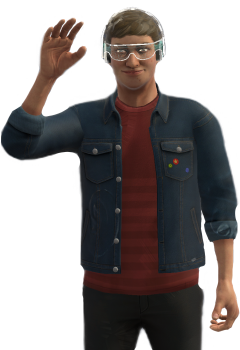
Best Future Self
Learning Environments
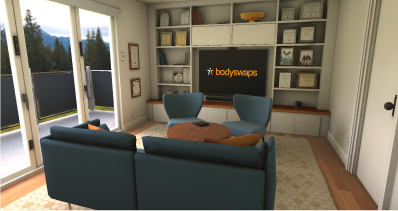
Tutor room
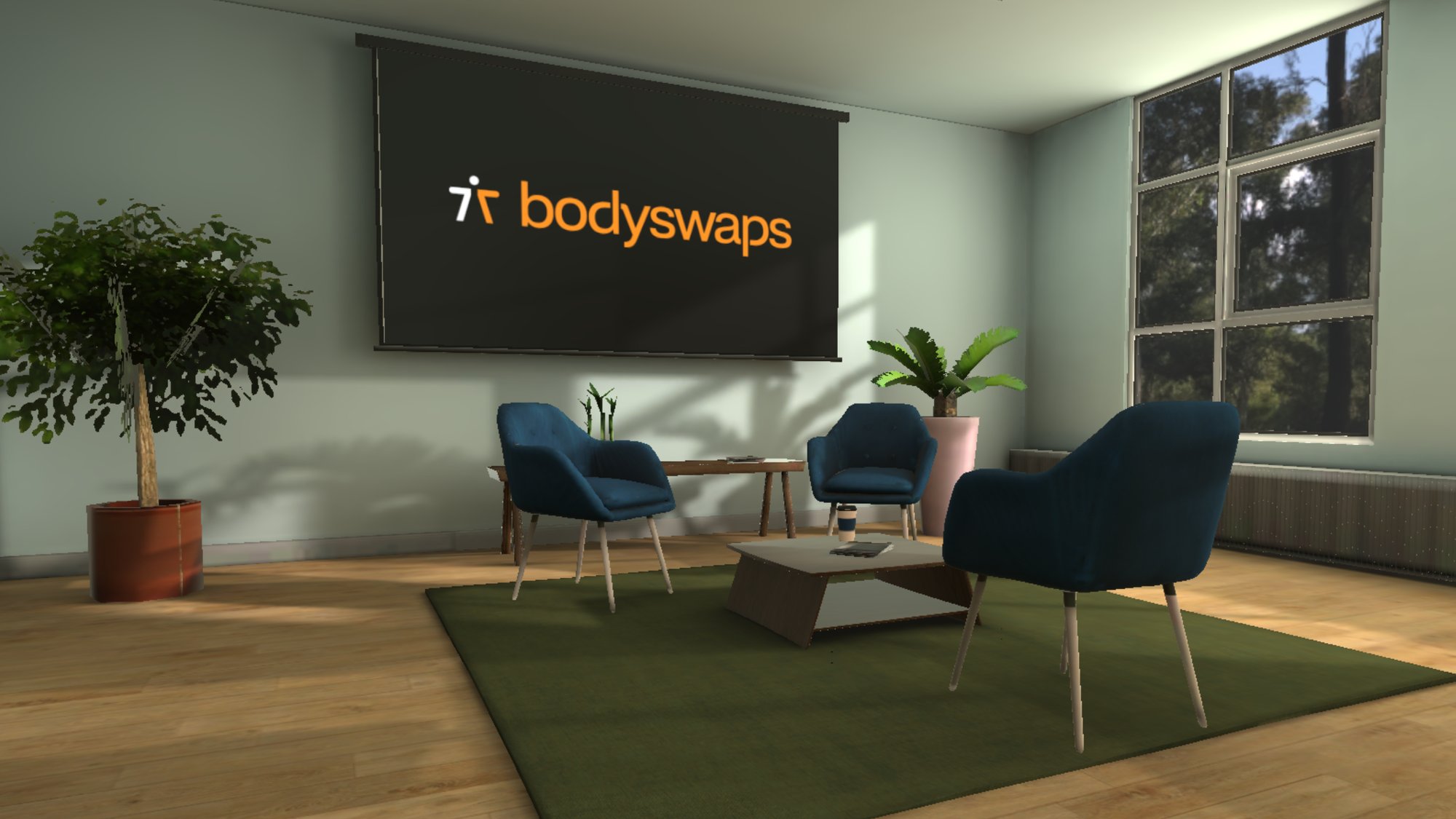
Present day lounge

The future
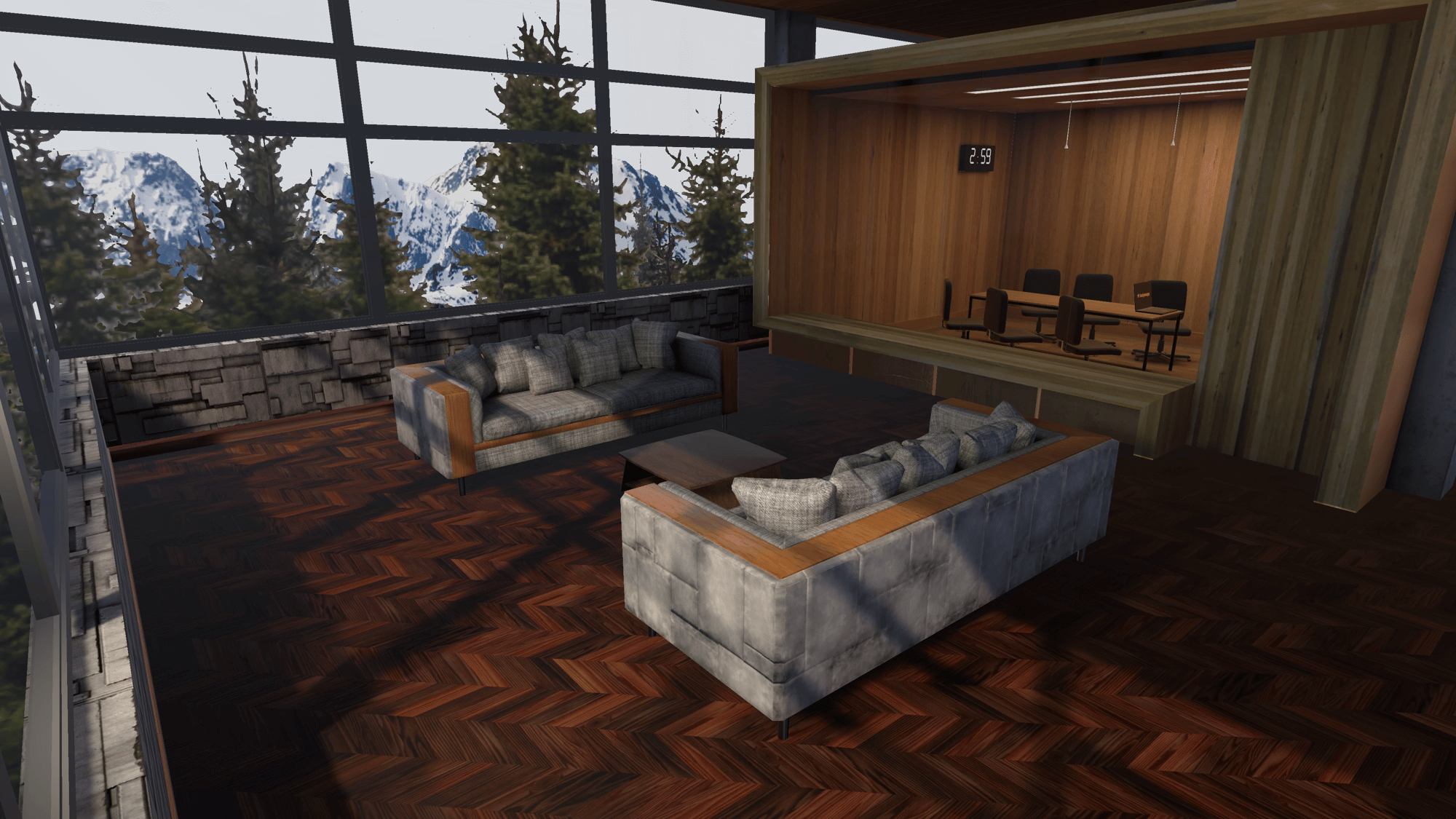
Mountain retreat
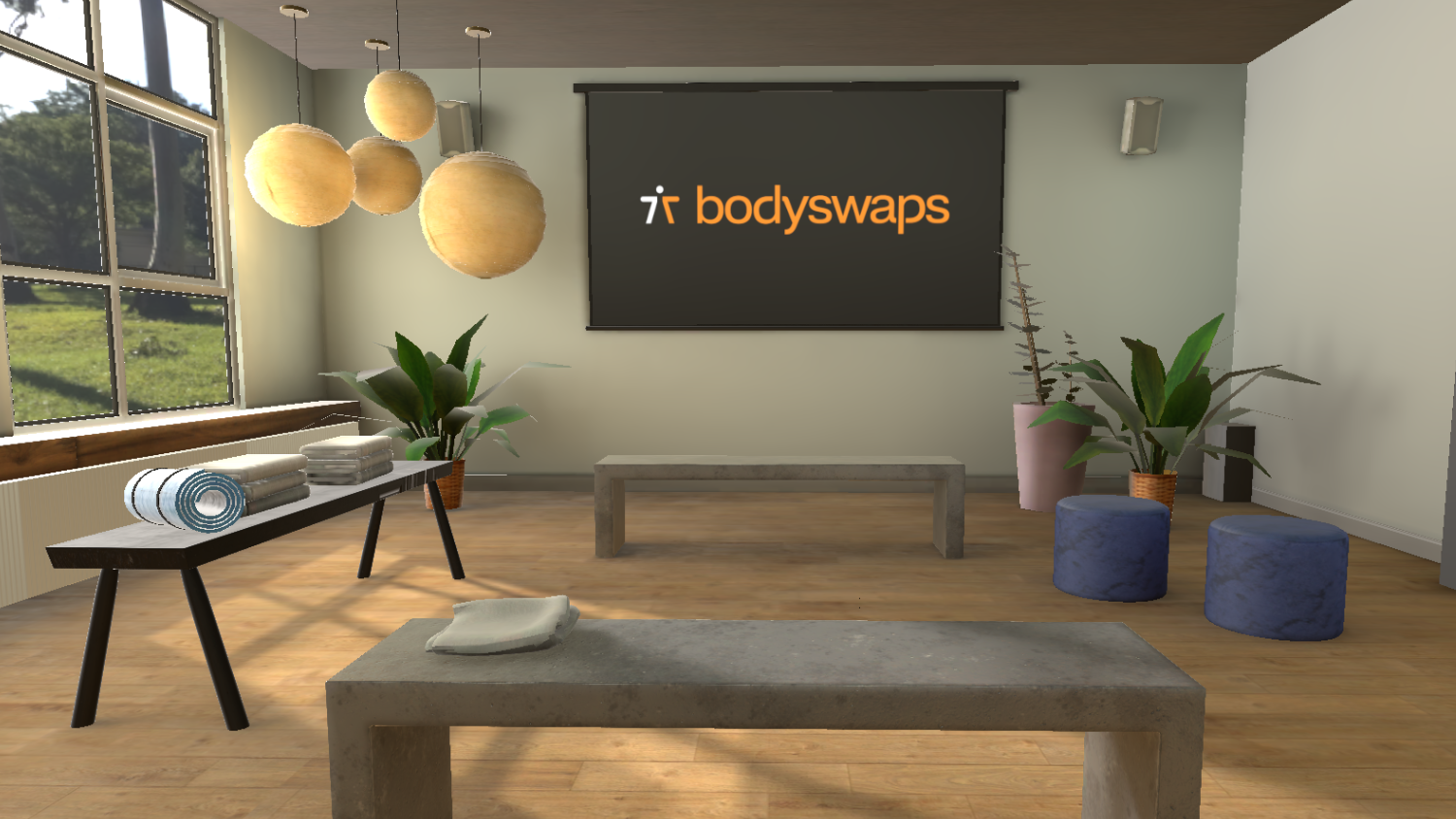
Wellness studio
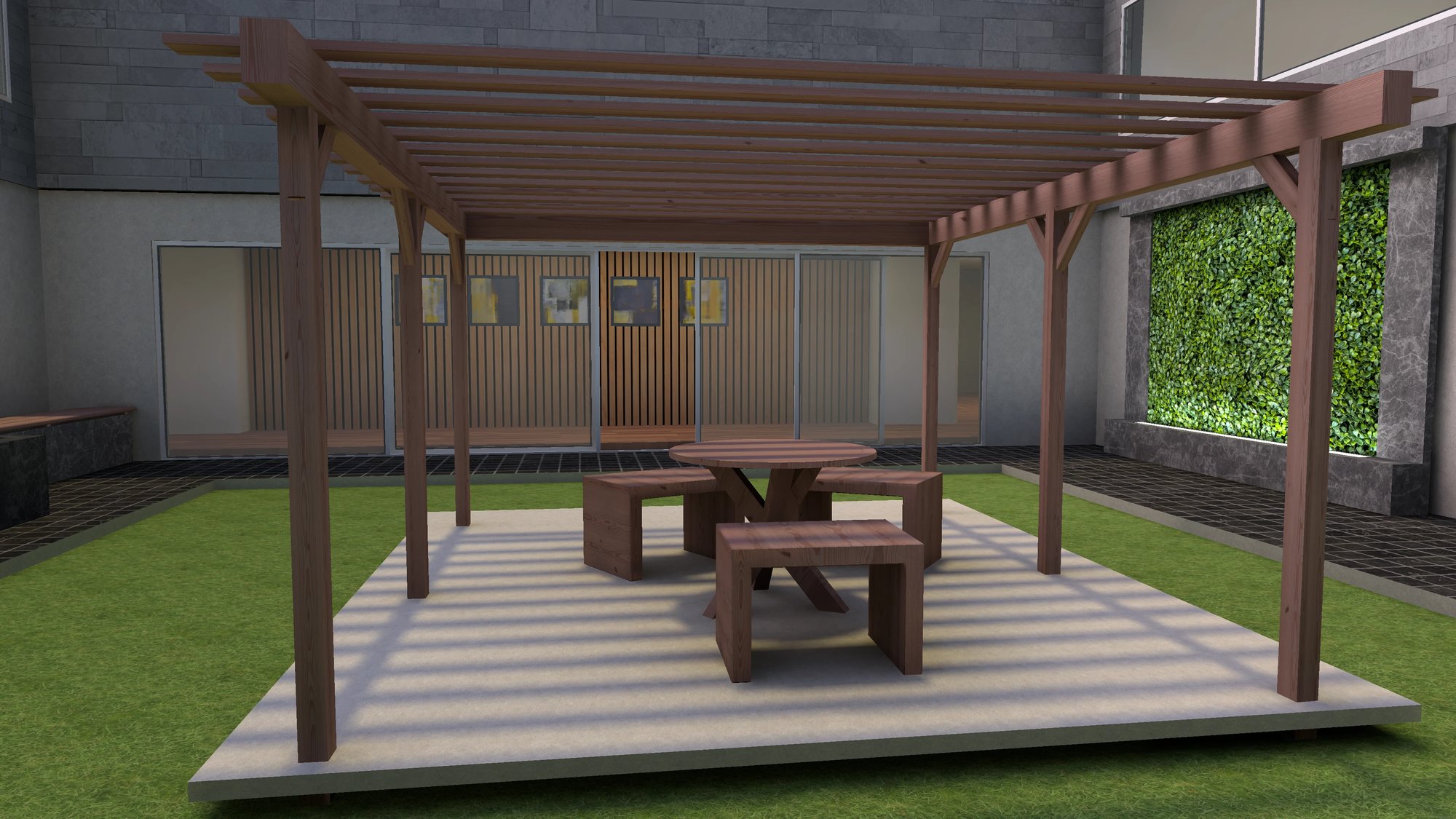
Courtyard
Purpose
Familiarise learners with the controls and navigation
Location
Characters
N/A
Duration
The first time learners use Bodyswaps, this onboarding sequence familiarises them with the features of the app, takes them through an avatar selection and embodiment activity, and prepares them for the experience to come.
During the induction, learners will:
- Find out how this training is different from the rest
- Select their avatar
- Discover their virtual journal
- Learn how to navigate and use the tools and settings
Purpose
Introduce the module and reflect on current confidence levels before beginning the activities
Location
Characters
Journal
Duration
As the induction comes to a close, a time traveller appears and introduces themselves as Asha, Guardian of Hope.
Asha explains that they have travelled through the multiverse to talk with the learner about the future. They ask the learner how thinking about the future makes them feel and provide a tailored response that celebrates or reassures accordingly.
Asha then introduces the key objectives of the module. They provide a brief overview of the techniques they will be showing the learner to help them to fulfill their potential and become their Best Future Self.
In a moment, Asha is going to take the learner into the future to meet their Best Future Self. First, though, Asha asks the learner to complete a short likert-style self-reflection activity to indicate how confident they feel about the key learning points:
- Aspiring for the future
- Planning for success
- Bouncing back from obstacles and setbacks
These self-reflection questions will be repeated at the end of the simulation to assess how the learner’s confidence levels have changed.
Note: If you wish to receive data about how the learner’s confidence levels have changed as a consequence of the training, it’s important that they complete this introduction and the debrief at the end.
Purpose
Prepare learners for setting personal aspirations by:
- Identifying core beliefs and values
- Generating a purpose statement
Location
Present day lounge
Characters
Asha
Duration
Asha explains that even the most successful people can struggle with a nagging sense of self-doubt. But you can take strength and motivation by connecting with your life’s purpose.
Asha then guides the learner through an activity designed to help them identify their values and think about what brings meaning and significance to their lives.
In this activity, Asha asks the learner to consider the following questions:
- Who do you admire? What qualities do you most like about them?
- When were you happiest? What were you doing?
- What is your proudest achievement?
- What would your friends and teachers say your best qualities are?
The learner answers, speaking in their own words, while LLM AI identifies keywords in their speech that indicate their core beliefs and values. The learner is then invited to use the identified words to create a phrase or sentence that reflects their guiding purpose in life.
If the learner struggles to come up with something, LLM AI then uses the identified keywords to generate six example purpose statements. The learner views these before either choosing a purpose statement that they’re happy with or creating one of their own.
Note: If LLM is not accessible - either through preference or technical issues - a list of common keywords and scripted purpose statements are presented.
Purpose
To encourage learners to be aspirational and visualise a future they personally relate to
Location
Future lounge
Characters
Asha
Best Future Self
Duration
Asha responds to the learner’s purpose statement with excitement and tells the learner:
“It’s time to ‘meet’ your Best Future Self. I need you to come with me. Try to project your mind on what your life would be like in 20 years time if you fulfilled the purpose you just shared”.
The learner travels forwards in time to a beautiful futuristic environment where they meet their Best Future Self, who appears to them in the form of a hologram.
Asha interviews the learner about how they imagine their Best Future Self’s achievements, career and lifestyle to be.
Before moving on, Asha explains that all futures are possible in the multiverse and it’s important to understand the part that everyone plays in shaping their own future.
Asha explains that achieving your brightest future requires ambition. They encourage the learner to ‘dream big’ by describing the neuroscience behind growth mindset. “With practise, skill and perseverance, absolutely anyone can get better at practically anything.”
Then, with that in mind, they invite the learner to ‘dream bigger’ if they wish.
Purpose
Provide a simple structure for planning self-improvement
Location
Future lounge
Characters
Asha
Best Future Self
Journal
Duration
4:00
Asha tells the learner that the secret to achieving their dreams is to become an active participant in their own success story.
Bearing this in mind, the learner is asked to identify three things:
- Something you can start doing to move yourself closer to your vision of Best Future Self
- Something you can stop doing that is currently undermining progress towards your vision of Best Future Self
- Something you can continue doing, which is already helping you become your Best Future Self.
The learner can then watch their Best Future Self repeat their Start, Stop, Continue action plan back to them.
Asha then challenges them to make a commitment – starting right now – to put those ideas into practice for two weeks. “If you start seeing progress towards becoming your Best Future Self, then you know you’re on the right path. If not, perhaps there’s something else you can start, stop or continue doing instead that will work better for you.”
Now, Asha says, it’s time to get back to the present day, so you can start making that dream a reality!
Purpose
Demonstrate how transactional writing can help manage emotions and create perspective
Location
Present day lounge
Characters
Asha
Journal
Duration
It’s time to return to present day so that the learner can take positive action in order to make their dream a reality.
“There’s just one thing that can sometimes get in the way. Something that has a habit of getting under our skin and preventing us from becoming the best versions of ourselves… I’m talking about anxiety.”
Asha then leads the learner through an activity about transactional writing - a technique for handling difficult emotions. The method involves writing a letter to the emotion to help yourself to look more objectively at how you’re feeling and then move on.
Asha demonstrates the technique by reading out a ‘Dear Anxiety’ letter of their own. While they speak, the text of the letter appears as a virtual autocue on the screen behind them.
Asha encourages the learner to have a go at either reading Asha’s Dear Anxiety letter aloud or making up one of their own, before committing to breaking up with anxiety by tapping on a letter to symbolise signing their name.
The text from Asha’s letter is also added to the downloadable journal for learners to keep after the experience.
Purpose
Learn how to make a plan for achieving a big goal
Location
Characters
Asha
Journal
Duration
In this activity, the learner finds themselves in a spacious room with white sofas and huge picture windows on all sides, surrounded by a beautiful natural landscape. In the distance, we can see a mountain.
“Every great journey begins with a single step. Now I’m going to show you how to plan your journey to becoming your Best Future Self.”
Asha tells the learner to imagine they want to climb a mountain, but there are things they can do before to make their goal feel a lot closer (training for the journey, packing their necessities, figuring out how they're going to get to the mountain and plan the route of the map etc…).
As Asha speaks, we see a path being drawn up the mountain from the base camp to the peak. The analogy is simple – to reach your big goal, you need to break it down into little goals.
Asha describes the process of defining a goal that inspires you and then breaking it down into manageable chunks.
Purpose
Learn how to make a plan for achieving a big goal
Location
Characters
Journal
Duration
“Let’s give it a try. Let’s say your gift to the world is to get your dream job.”
The drawing of the mountain is now displayed on the flatscreen. An annotation appears near the mountain’s peak, saying ‘Dream job’.
Asha now coaches the learner through a scaffolded conversation interaction designed to build a plan to achieve the goal.
At each stage, the learner chooses one of three options:
- A) a self-defeating fixed-mindset option
- B) a small step that advances steadily towards the goal
- C) challenging steps, which sometimes lead to big gains and sometimes lead to failure (but with big learnings).
If the learner selects an A option, Asha provides encouragement. B options are rewarded with congratulations and C options sometimes fail, but sometimes reap big rewards. This is an important learning point and a chance for Asha to highlight valuable learnings about an obstacle – as well as an opportunity that might otherwise have been overlooked.
At each decision point, the image on the screen is updated to show the progress towards achieving your dream job (represented by progression points working up the mountain to the final destination: Dream Job).
When the learner reaches the peak of the mountain, Asha concludes by telling them:
“If you’re lucky, by the time you reach your goal, you’ll discover that you already have a new goal, with new things to learn and skills to acquire. Embrace it – that’s what makes life meaningful!”
Purpose
Location
Characters
Journal
Duration
Asha explains to the learner that things won’t always go their way. Scratch the surface and an easy win might not be as beneficial as the goal you really had to work for. And – plot twist – sometimes a bad outcome might not be the huge disadvantage that it first appears to be.
Now the learner completes a Gauge Diagnostic ‘Good / Bad / Hard to say’ game, inspired by the parable of the farmer, which teaches resilience, but with a twist. Instead of the original parable, the story has been rewritten to describe the successes and setbacks of two young people – Amy and Ben – as they embark on their new careers.
Initially, Amy appears to be off to a head start, while Ben struggles to find a job in his chosen career. But as time passes, the tables appear to turn. Amy finds her new job stressful and sometimes demeaning, while Ben discovers aspects of his job that he rather enjoys.
At each stage in the story, the learner is asked to assess whether the situation is good, bad or hard to say. Ultimately, both Amy and Ben progress towards fulfilling careers that are right for them.
The moral of the story is that, in the grand scheme of things, ‘good’ and ‘bad’ are often just stepping stones to a bigger story that you only see later on. So if things ever feel like they’re not going so well, try to defer judgement for the time being and imagine how something good might come out of it in the long run.
Purpose
Location
Characters
Duration
“With the best will in the world, the road to success can be hard to navigate and you may still encounter many obstacles along the way. But you can recover from setbacks if you know where to direct your focus.”
Together, the learner and Asha explore concepts around inward and outward focus.
First, they travel to a serene mindfulness studio where they look inside to the learner’s strong inner self. Here, Asha encourages the learner to reflect on a situation – Your boss gives you a tasks that you’re not ready for – and then think about the different ways that they might respond, describing out loud what they might do if acting with a negative attitude and a positive attitude.
They then bodyswap with Asha to see their avatar voice their responses.
“The point is, when you look at it this way, and connect with how your Best Self might act, you can see that you already know what the best course of action might be. All you need to do then, is be your Best Self!”
Asha then leads the learner outside to a leafy courtyard to think about focusing outwards. In an evaluated conversation interaction, Asha presents some potential obstacles to the ‘Dream job’ goal and challenges the learner to choose a course of action for each (correct answers are: persevere, take a new approach, ask for help, set new goals).
Asha emphasises the importance of process versus person-focused thinking. Process-focused thinking is practical – move on and look for opportunities to improve your chances next time. Person-focused thinking is limiting – accept things as they are and don’t even try.
Finally, Asha asks the learner how confident they feel about achieving their dreams now.
Purpose
Location
Characters
Journal
Duration
5:00
This activity is about using positive self-talk to self-doubt into positive affirmations. Asha tells the learner, “If you’re experiencing self-doubt, I can teach you a technique to build inner confidence by switching from negative to positive self-talk.”
Now, the learner speaks to Asha about their concerns, prompted by notes in their journal and on the screen reflecting common sources of doubt for young people.
The learner then bodyswaps with Asha and suggests suitable positive self-talk statements to their avatar, like: “I can trust my abilities,” “I bring value to the world,” “I can do this!”
A transcript is created from their statements and the learner bodyswaps back into their own avatar and follows Asha’s directions to stand up, plant their feet, hold their head up high and then speak aloud their self-affirming statements with conviction.
Asha then encourages the learner to repeat their positive self-talk regularly to paint a picture in their mind of the best version of themselves.
“Before you know it, that niggling self-doubt will be a thing of the past!”
Purpose
Location
Characters
Journal
Duration
Asha explains it’s time for them to go.
They talk about the ‘ripple effect’ and how being your best self not only improves your own wellbeing, but exponentially affects everyone else, too.
Finally, they discuss Solomon’s paradox – the phenomenon in which we give better advice to other people than we do to ourselves. So before we finish, Asha asks the learner to reflect on what they have learned here and speak aloud three things that they’re going to take away from the experience and use going forwards.
Asha tells the learner:
“I’ve seen the future. Your future. And I promise you, if you continue to apply the techniques you’ve learned today, it is going to be awesome! Repeat after me…”
They read out an abridged version of Art of Brilliance’s Permission to be awesome one sentence at a time. The learner repeats the pledge and then ‘signs their name’ on a scroll as a promise to themselves.
Purpose
Location
Characters
Journal
Duration
Before the learner leaves the module, they are asked to complete a short survey about their experience.
This survey is not compulsory, but the data helps us to assess the effectiveness of our product and identify any areas that need improvement. Clients also find it beneficial when assessing ROI.
They are asked to mark whether they agree or disagree with the following statements, on a 10 point scale:
- I would recommend this experience to others
- The experience helped me identify elements I could improve upon
- I have a better understanding of growth mindset
